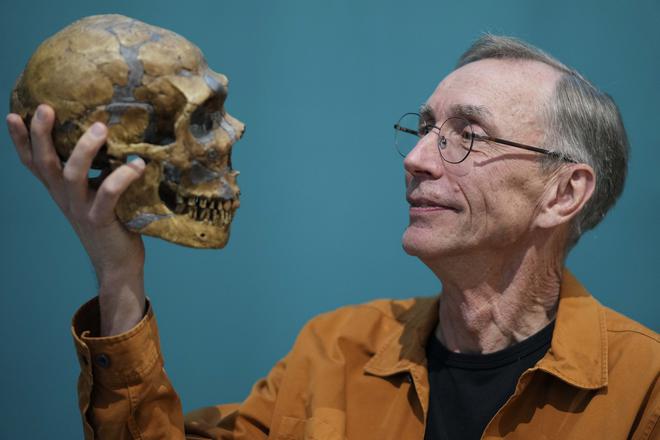This article is part of a fortnightly column exploring contemporary concepts and issues in genetics.
The human nose is an intriguing feature that holds significance in various aspects of our lives. Beyond its practical function, to facilitate our breathing and sense of smell, the nose has long been associated with notions of beauty, deception, and other aspects of historical significance. Different cultures and societies have their own standards of beauty, and the shape, size, and proportion of the nose have often contributed to these ideals. We can also observe the importance of the nose in art, literature, and other remnants of ancient civilisations.
Identification of facial ‘landmarks’ and computing the distance between them has been one of the key ingredients of facial recognition, which is widely used around the world to recognise and identify faces, in biometric-based security services, and in a wide variety of other day-to-day applications – including, importantly, surveillance.
Computational methodologies that can automate these measurements to be faster and more efficient have been developed in recent years and are widely used. For example, the ‘DigiYatra’ application developed by the Government of India and launched in December 2022 is widely used in major airports in India to authenticate passengers’ check-ins.
What the genes behind the human nose?
A recent study – published in Communications Biology, led by researchers from the University College London and Fudan University and with contributions from researchers across the world – used 2D images and measures of the distance between facial landmarks, computed in an automated fashion, in over 6,000 Latin American individuals as the basis for a genetic association study.
This way, they identified 42 new genetic loci associated with the human nose. (A ‘locus’, plural ‘loci’, is the position of a particular gene on the human chromosome.) Of these, 26 could be replicated in other populations, including Asians, Europeans, and Africans. One of these loci included a location called 1q32.3 (short for chromosome 1, short arm, locus 32.3), which is associated with the height of the human nose.
This genetic locus was previously shown to have been contributed by the Neanderthals. The present study adds to this evidence, suggesting that specific variants in the genetic loci are associated with midface height. This chromosomal locus encodes for a gene named activating transcription factor 3 (ATF3) .
The strongest association for the genetic loci indeed came from a regulatory region in the ATF3 gene. While the researchers have not suggested that the ATF3 gene is directly involved in the development of the skull, this gene is regulated by a gene called FOXL2, which has been implicated in the development of the skull and the face. Additionally, mutations in the FOXL2 gene can result in facial abnormalities.
Why does the shape of the nose matter?
The shape of the nose could have evolutionary implications in the better survival of humans, possibly helping them adapt to climates prevalent in the time of our ancestors. There is also speculation that changes in the shape and the size of the nose could have affected the landmark’s ability to maintain certain temperatures and humidity within.
Prehistoric humans and Neanderthals are believed to have interbred, exchanging genetic material and contributing to the genomes of present-day humans, thus shaping human destiny to this day. This is also known as the introgression of genomic sequences. Researchers have estimated that this interbreeding occurred approximately 70,000-100,000 years ago, leaving a lasting genetic legacy in the human population.
The evolutionary geneticist Svante Pääbo made significant contributions to the study of Neanderthal genomes and the transfer of genetic information (introgression) between the archaic, long-extinct hominids, the Neanderthals, the Denisovans, and modern day humans. (Denisovans are a subspecies of archaic humans who lived until around 30,000 years ago.)
Dr. Pääbo’s efforts to understand archaic hominid interbreeding have earned him recognition in the scientific community, and won him the prestigious Nobel Prize for Physiology and Medicine in 2022. He has provided key insights into the evolutionary history of our species and the genetic contributions we have inherited from our ancient relatives.

Do we have other genes from Neanderthals?
The present study adds to a growing and significant body of evidence on diseases and traits in modern humans that have been influenced by genomic loci from the Neanderthals and the Denisovans.
A mass of emerging evidence suggests that the Neanderthal genomes could also have contributed to the way we respond to pathogens as well as defined our risk of developing a number of skin and blood conditions and some cancers (like liver cancer), and even depression.
How the origin of humankind in Africa, their subsequent migrations out of the continent and their interbreeding with the Neanderthals, the Denisovans and other archaic hominids, who are today extinct, have together contributed to different human traits is an active area of research.
In fact, one recent study published in Nature analysed human population diversity in Africa and reported that early humans diverged in Africa from multiple, rather than single, ancestral roots and that descendants from only some of those roots could have interbred with the Neanderthals and the Denisovans. Different global populations therefore have varying degrees of the genetic components from these archaic human species.
How can this knowledge help us?
By understanding the genetic interactions between them and us, scientists can better comprehend the genetic diversity and adaptability of our species.
The continued exploration of this interbreeding event and its consequences for human biology and health represents an exciting frontier in genomic research. As more studies contribute to the extant evidence in this field, our understanding of the interplay between archaic and modern human genomes will continue to deepen.
This knowledge could in turn offer new avenues for the study and treatment of various diseases, as well as build a greater appreciation for the intricate tapestry of human genetic heritage.
The authors are scientists at the CSIR Institute of Genomics and Integrative Biology (CSIR-IGIB). The opinions expressed here are personal.







